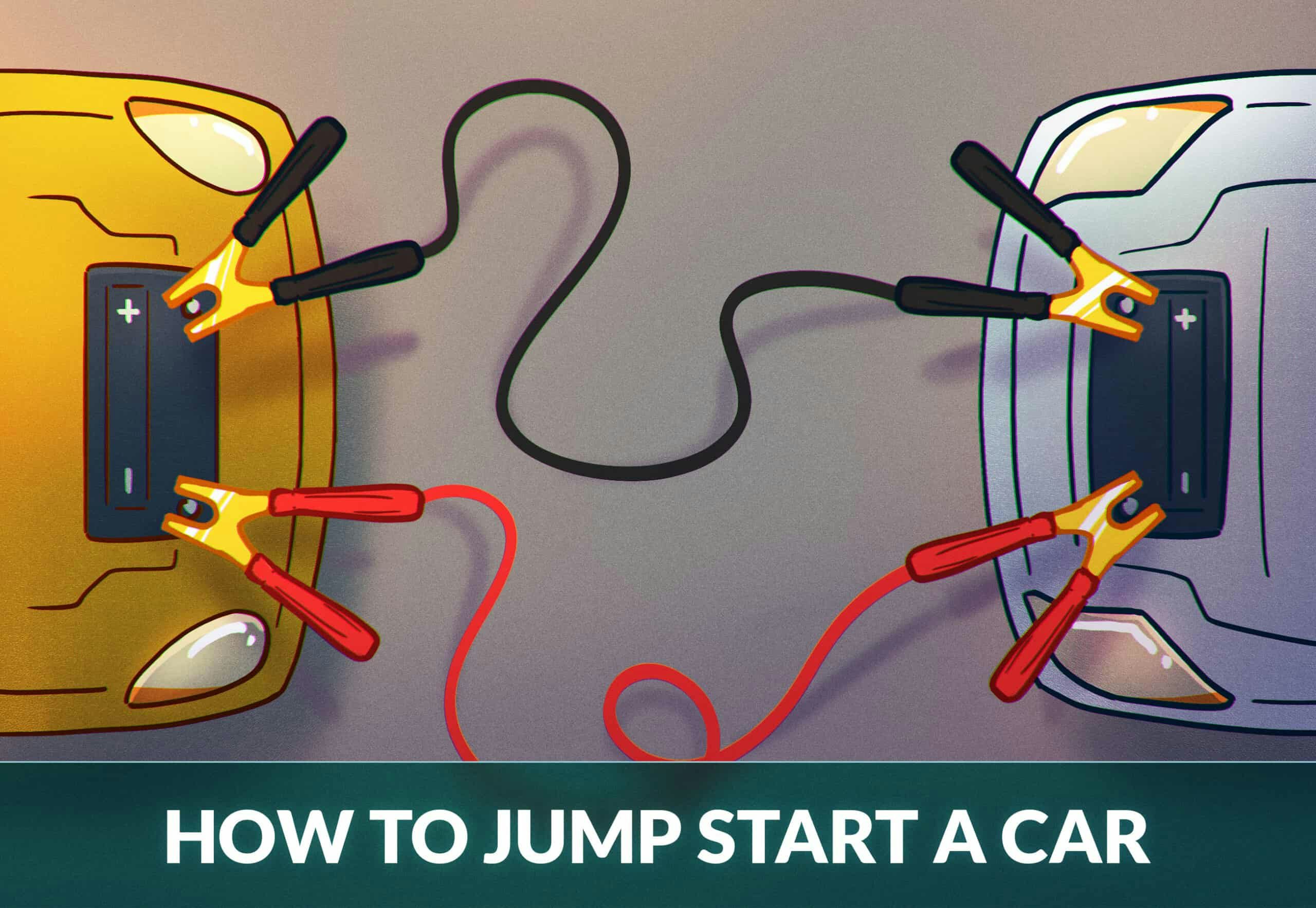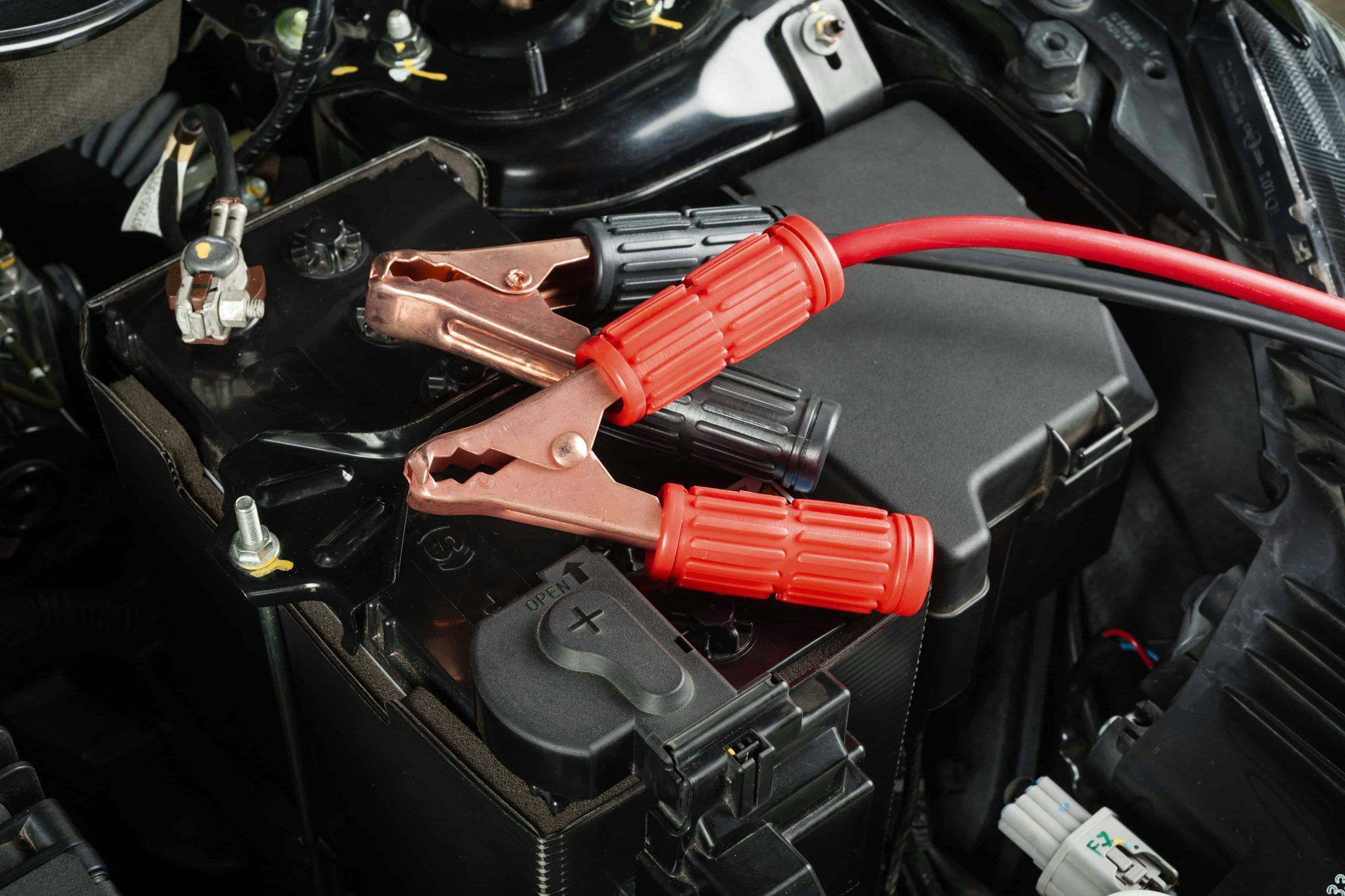
How to Jump a Car (Step-by-Step Guide)
Your car battery is used to power many components in a vehicle, such as the lights and the radio. More importantly, the car battery is used to start the car, which means you won’t be able to get anywhere if your battery is dead. Luckily, there is a way to revive a dead battery; you can do a jump start.
Due to how easy it is to accidentally drain a car battery, you may find yourself having to jump start your car or help others jump their car every so often.
There are many situations that can result in a dead or drained battery, for example:
- If you have left your car door slightly open, older vehicles may automatically activate a light inside the vehicle which drains your battery.
- If you have turned on a light within the vehicle manually, it may not turn off when you leave the car and drain your battery.
- Your battery may be old and only hold a very small charge, which means it may drain slowly by itself when you leave the car unused for a long period of time.
- You live in a place with cold weather
If your car battery dies repeatedly, you should drive to a mechanic’s shop to let them help you solve the issue or replace the battery entirely.
When NOT to Jump Start a Car
Before we go through the steps on how to jump a car, you should know that not all car batteries are suitable for jump-starts. There are a number of instances when you should simply replace the battery, such as when the battery is visibly damaged (corroded, cracked, or leaking), frozen, or dry.
Always find your vehicle’s manual and read through the parts related to your car and battery model. Some car manufacturers, car models, and car batteries need specific handling due to sensitive circuitry. For example, some car manufacturers don’t recommend jump starting the car, but rather that you replace the battery right away.
How to Jump a Car in 3 Simple Steps
Make sure to follow these exact steps when jump starting a car to avoid a battery explosion.
Step 1 – Locate What You Need
Locate the car’s battery. It’s usually located close to the engine under the front hood, but for specific car models, it can be placed next to the spare wheel in the trunk. Once you’ve found your car’s battery, you should do the following.
- Get a portable jump starter OR another vehicle to use as a jump starter. If you use another vehicle, you must match the voltage system of the donor battery to the dead battery. For example 12V to 12V.
- Identify the positive and negative terminals. A positive terminal is marked with a plus (+) and the negative terminal is marked with a minus (-) sign.
- Find a set of jumper cables with alligator clips on each end. The jumper cables are used to let electricity flow from one system to the other with the intention of recharging the dead battery enough so you can start your car. The RED clip is usually positive (+) and the BLACK clip negative (-) to help you keep them separated.
What is a Portable Jump Starter?
A portable jump starter is essentially a battery-box used to jump a vehicle without connecting to another vehicle. If you use a portable jump starter, you can connect the cables (usually comes with the box) directly to the dead battery. Just apply (+) to (+) and (-) to (-) per the instructions on the box.
Step 2 – Attach the Jumper Cables
Most people do not have a portable jump starter in their car and will instead need to jump start the car with jumper cables connected to another vehicle. You will then use the battery of the “donor” vehicle to recharge the dead battery.

How to Attach Jumper Cables
- Attach the RED clip to the positive (+) terminal of the dead battery.
- Attach the other end of the RED clip to the positive (+) terminal on the working car battery.
- Attach the BLACK clip to the negative (-) terminal of the working car battery.
- Attach the other end of the BLACK clip to an unpainted piece of metal on the car with the dead battery. Do NOT attach to the negative (-) terminal on the dead battery. A good place to attach the clip is, for example, on one of the metal struts that hold the hood open.
Note: Do NOT touch clips together when connected. It will short-circuit the battery causing a risk to you and others with sparks flying all over the place.
Step 3 – Revive the Dead Car Battery
After you have attached the jumper cables, you can finally transfer energy to jump start the car.
- START the donor car to transfer power to the dead battery.
- RUN the donor car for a few minutes minimum to transfer power.
- CHECK to see if the dead battery has enough power for a jump start. For example; try the interior light.
- START the car up when you think there is enough power for a jump start.
- If the car starts up – great! Leave the engine on to recharge the battery.
- If the car doesn’t start up – re-check the jumper cable connections and keep the donor car on for a few more minutes. That should give the dead battery time to charge up.
- REMOVE the jumper cables and turn off the donor vehicle. You should remove the cables in the reverse order you connected them.
- KEEP the car running for a minimum of 10-20 minutes to re-charge the battery properly before you turn it off.
Important Safety Info When Removing Jumper Cables
As previously stated, you should remove the jumper cables in the reverse order you connected them. This means that you should follow these steps:
- Remove the BLACK clip attached to an unpainted piece of metal.
- Remove the BLACK clip from the negative (-) terminal.
- Remove the RED cable from the positive (+) terminal on the working car
- Remove the RED jumper cable from the positive (+) terminal of the previously dead battery
What If Your Car Doesn’t Start?
Unfortunately, car batteries can get permanently damaged if they are depleted for too long. If you have tried the steps in this article, including re-checking the jumper cable connections, and your car still doesn’t start – it’s likely you will have to replace the battery for a new one.
Don’t worry though, replacing a car battery is usually a swift process and costs between $50 to $200 depending on the type of replacement battery needed.

550+ exam-like questions
All you need to ace your test
Perfect for first-timers, renewals and senior citizens
Recommended articles
Ace your DMV test, guaranteed
Want to Be the Top School in Your Area?
- Simple & automated admin
- More time for teaching
- #1 learning materials for students


